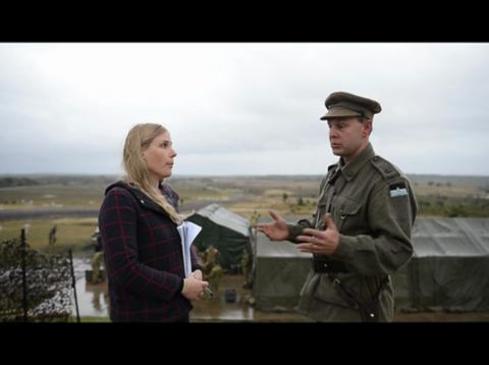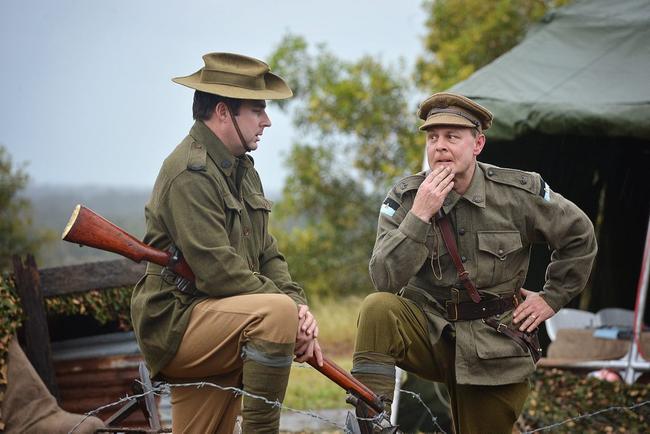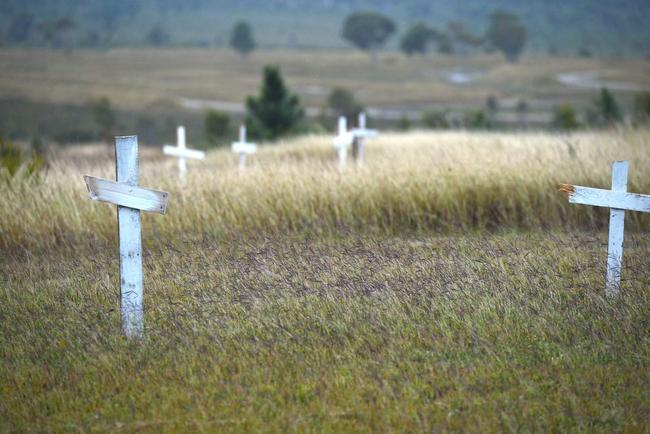Battle of Pozieres: The greatest story never told
Active soldiers, retired diggers and dignitaries from across Queensland commemorated the Battle of Pozieres at Cam Kerr last weekend.

Gympie
Don't miss out on the headlines from Gympie. Followed categories will be added to My News.
IT IS the greatest story never told.
But on Saturday evening, the Battle of Pozieres, a First World War battle that claimed thousands of Australian lives, finally found its way into the history books at the Camp Kerr military training camp near Tin Can Bay.
Active soldiers, retired diggers and dignitaries from across Queensland arrived at the Wide Bay Military Training Area to commemorate 100 years since the battle and to honour those who lost their lives under intense artillery and machine gun fire on the open, grassy plains of Pozieres from July 23 in 1916.
If the aim was to bring those in attendance to tears, that aim was reached.
White crosses to represent the 196 Australians killed in the 9th AIF Battalion littered the hills, while a sole bagpiper played at the top of the hill as the military prepared to march down the open grassy plains before live ammunition was fired with tracer rounds.

The camp base, trenches and simple dinner set up on one of the training fields at Camp Kerr, gave guests the exact idea of what took place at the undulating and fertile farmlands of the French province, 100 years before.
Corporal Tom Hess, who role-played the character of Major Duncan Chapman, a 9th battalion platoon commander from Maryborough who was the first to step ashore at Gallipoli, said the recreation was about honouring the fallen, in a battle that was regarded as Australian.
"Pozieres ridge is more densely sown with Australian sacrifice than any other place on earth," he quoted from Australian historian Charles Bean.
Following three weeks of stalemate, three AIF divisions were ordered to relieve the British and assault German strongholds at Pozieres.
From July 23 to September 5, 1916, in a battle space of little more than 1.5sq km, the 1st, 2nd and 4th Australian Divisions fought.
Under intense artillery and machine gun fire they prevailed, and forced the German lines back to the east.
But it came at a high cost.

The appalling loss of life totalled 7000, with 4700 still buried in unmarked graves at Pozieres. There were 23,000 casualties.
Colonel Luke Hughes, commanding officer of 9RQR, said the news of such carnage shocked Australians back home, making a huge political impact.
"Already the Australian public was losing its support for the war," he said.
"Prime Minister Billy Hughes was advocating for conscription.
"Australians were brutally shocked by all of this carnage and the vote for conscription failed," he said.
"Since then, no-one's wanted to talk about the battle. Now 100 years later it's fine for us to talk about it."
He said the 196 white crosses represented the 196 lives lost from the 9th AIF Battalion, 132 of whom have never been found and are still buried in unmarked graves in and around Pozieres.
"We're doing the best we can to honour those who fought in the First World War and paid the ultimate sacrifice," he said.
"This battalion - from Bundaberg to Brisbane, does a lot of training.
"We represent your community's heritage.
"Many people from Gympie and around here were killed in those battles," he said.



